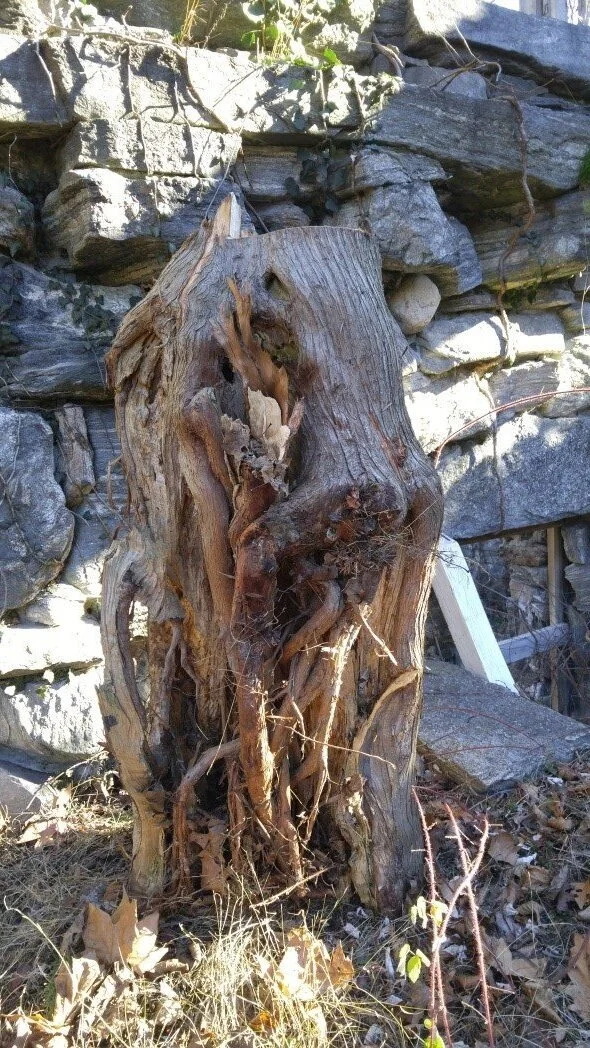Strange Trees of RNC
THE WINDOW TREE
Mid-way up the entrance road to the Nature Center, on the right side and a few feet off the road, is the Window Tree. A visitor can look right through, or a squirrel can climb in the center of the trunk and out to the woods on the other side.
How does a tree go about getting a window? This particular tree forked a few feet above the ground and each of the leaders grew separately for a while. Over time, because of wind, twig damage, or just by chance, the two leaders met up again. Slowly, they rubbed against each other in the wind until the bark of each wore off and the green, living cambium of each branch fused to the other. The Window Tree’s branches continued their upward journey as what looks like a single trunk.
Gardeners use a similar process called grafting (in the wild it is called inosculation) to join trees of two different species or varieties together. This is useful, for example, to attach branches from a better-tasting apple tree onto the stem of a hardy, wild variety in order to get the best of both individuals. Creative gardeners have even used this knowledge to grow living chairs made from several trees or to braid saplings to each other as they grow.
THE CTHULU TREE
Cthulu is an octopus-faced character from the horror novels of H.P. Lovecraft. Our Cthulu Tree had a similar look but instead of tentacles, it had a beard of roots dangling tentacle-like, three-feet above ground.
Some trees like maples and white cedars - the Cthulu Tree was the latter - are prone to growing roots from wounds, especially those made by the loss of a major branch. In some cases, the roots that develop at the top of the cavity will descend into the decomposing wood of the tree below and begin to dig into and consume nutrients from their own trunk. Gruesome!
Unfortunately, our Cthulu Tree is no longer in the Nature Center – it had to be cut for safety reasons. However, the phenomenon can be seen by an observant hiker in just about any forest.
THE FRANKEN-TREE
This is perhaps the strangest ‘tree’ in the Nature Center as it is made from solid concrete with a few Frankenstein’s-monster-like metal bolts for good measure. The concrete trunk is about 10 feet high and is complete with roots descending betwen cracks in a boulder, but it has no branches. This is not a strange art installation– it is the only remaining sign of a real tree that once lived in that exact spot.
We know that the tree must have lived during the early 1900s – the same time frame in which the nearby “Ruins” were a beautiful mansion owned by the Parsons family. The family also had a manicured garden, which you can see in photos on the nearby signs. The Franken-tree must have been a favorite in the garden judging by the lengths gone through to try to save it.
In the early 1900s, it was not uncommon for arborists to try to save a tree with a cavity by using cement to fill it in – similar to what a dentist does to a tooth. Unfortunately, this practice almost always failed and has now been abandoned. The cavity in the Franken-tree must have been enormous based on the quantity of cement still standing in the place of the long-gone original. Eventually the concrete-filled tree died and rotted away, leaving the cement cast in its place.
Still curious? Head up to the Nature Center this weekend and see what strange trees you can find. Remember social distancing applies on the trails, too! Please maintain a six-foot distance between you and others.



